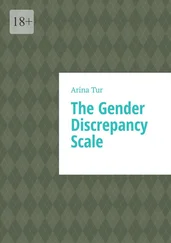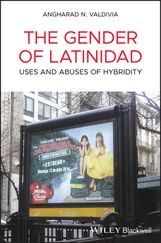I’d like to revisit and update that list for you. Interestingly, nothing from the original list has become obsolete during this recent and seemingly sudden sea change in gender sensibilities. Instead, it has simply grown. As an umbrella, we have all of our gender creative children, those who declare in word and action that the gender they are does not match the sex marker on their birth certificate and those who are our gender bandits—transgressing the culturally prescribed norms for “gender appropriateness.” In other words, the list includes all children and youth who challenge and explore both gender identity and gender expressions. Under the umbrella we have:
Transgender Children:Children who declare their gender as other than reflected by the sex marker on their birth certificate. This can include male to female, female to male, male to other, and female to other, and can show up at any age.
Gender Fluid Children:Children who flow between the female and male poles of gender, either at a point in time or over time.
Gender Hybrids:Children who combine or alternate between genders, often in a binary way. Among gender hybrids we have:
Gender Priuses—Half Girl/Half Boy: This gender label was taught to me by a school-age child who, from the front, looked like any third grade boy in basketball shorts, tank top, and basketball sneakers, and, from the back, had a long blond braid tied at the end with a bright pink bow. As this little person explained to me, “You see—I’m a Prius.” And then, in response to my puzzled look, “I’m a boy in the front, a girl in the back. A hybrid.”
Gender Minotaurs: Riffing on the notion of the Prius and the minotaur in Greek mythology—half-bull/half-man—I came up with my own label for all the children who were explaining to me that they were one gender on the top, one on the bottom, this usually to account for genitals that were at odds with the gender they knew themselves to be. Prior to puberty, everyone’s top is the same, so one can facilely claim their top as being either male or female. But bottoms are another story, particularly in a culture like ours where penis = boy (rather than a penis-bodied person) and vagina = girl (rather than a vagina-bodied person). So, these children live like minotaurs, but rather than bull on the bottom, human on the top, they are typically sex assigned at birth on the bottom and affirmed gender—the one that is “me”—on the top. Not surprisingly, these children, particularly the female-identified natal males, are enamored with the mermaids in my office, on the big screen, and in their toy boxes: a girl on the top, a fish on the bottom, who can morph into a whole girl under the right circumstances. Indeed, my Ariel (Little Mermaid) figures are the number one choice for many of the younger gender minotaurs who come for an office visit.
Gender-by-Season Children: In spinning their gender webs, many children scout the territory around them, or their parents do it for them, and they assess that school, where they spend much of their time during the year, will not be a comfortable place to either explore or live in their authentic gender. They may also feel they have a history that follows them: Everyone at school has always known them as a boy or a girl, so they’ll just keep it that way and wait until the summer, when they’re off to a summer camp or to a different part of the country where they can shed their false gender self. A remove from the everyday setting allows their true gender to come out, at least to try it on for size, if not to declare it. So, we might have Sally during the academic year who enrolls in camp as Sam, or Joey at school who lives as Joelle in the summer when it’s time to be a helper at Mother’s family day care. Sometimes it’s the opposite—a youth whose true gender self is forbidden at home but who goes to a school that is gender inclusive and accepting, transforming school into a gender underground for the youth, a place where the school personnel try to make up for the lack of acceptance that the child is meeting up with at home. I learned the gender-by-season category from a nine-year-old who explained to me, “I would die if anyone at school knew, but I stay with my grandma and grandpa in New York in the summer and they say I can be any gender I want. So, I’m like Clark Kent/Superman—a plain old boy at school, but the most beautiful girl at my grandma’s. Better than having tights, a cape, and flying.”
Gender-by-Location Children: A close cousin to gender by season, many boys come to my office explaining how they tear home to put on their favorite dress, and will even wear it to the park, but they leave it in the closet when they go to Aunt Susie’s, or to school, because it just doesn’t feel good to have to answer all the questions. Or because it wouldn’t even be allowed in their school. Or they go over to their friend Tommy’s and put on dresses there, because Tommy’s parents understand and let him wear dresses all the time, not like at home.
Gender-Ambidextrous Children:This is a different category than gender hybrids because, like gender fluid children, who do not live as a gender hybrid, they are puzzled by all our efforts to pin them down as one thing. Here is the story of the child who brought this category to light: I was meeting with two moms to talk about their child, a natal male. It turns out that six-year-old Tony changes gender not only by setting but by relationship. What Tony never changes is what is worn every day—dresses over leggings. Tony is angry if Tony’s brother Marklin refers to Tony as a sister, but fine if Tony’s neighbor across the street thinks Tony is a girl. Tony is both a girl and a boy right now. In talking to the moms, who have been puzzling for years now, urgently wanting to pin down Tony’s gender, whatever it might be, I spontaneously came up with the term gender ambidextrous . Again, I was learning from the children who they knew themselves to be, simply finding my own words to describe what they were telling me—in Tony’s case, “I’m just me. Why does everyone keep asking?” As soon as I threw out the idea of gender ambidexterity, both moms completely relaxed and one of them said, “Yes, this makes so much sense. And this is what we can tell people—Tony is gender ambidextrous.” Finally they could pin something down, a way to place their child in the gender scroll of life. If children can use both their left and right hand on par with each other, so, too, can they use their female and their male part of self, not to mention all the parts in between and beyond those two genders; ergo, we have the gender-ambidextrous child.
Gender Teslas:The gender Tesla is the state some children reach after a stint being a gender hybrid or gender ambidextrous. Some simply go from zero to sixty to get there, meaning from the sex assigned to them at birth to their affirmed cross-gender identity. Some go more slowly. Let me explain. One day I was meeting with a patient of mine at the gender clinic, a child I had been following for several years. Shannon was still exploring gender, not sure where it would land, but by all observations moving from girl (natal sex) to boy. Prior to this clinic visit, Dr. Rosenthal, our medical director, had been using a gender scale (1 = girl, 10 = boy for children assigned female at birth; 1 = boy, 10 = girl for children assigned male at birth) and asked all children who were gender exploring to give themselves a number along the scale, with an idea of measuring movement versus stability over time. At a clinic meeting we decided to dispense with the scale as being too binary and suggesting there were only two options—toward boy or toward girl. Some of us who were feminists also didn’t like the idea that girls got a 1 while boys got a 10 for the birth-assigned females (with the implication that 10 is a higher score than 1). However, Shannon had always counted on that scale and was looking forward to reporting some new ratings to us. So, when I walked in the room, Shannon said to me, with some innuendoes of accusation, “You know, Dr. Rosenthal forgot to give me the scale today.” Without telling him the news that we had discarded the scale, I simply asked, “What is it that you wanted to tell Dr. Rosenthal?” “Well, I’ve moved from a 4 to a 6.” I took this opportunity to share the idea of the gender Prius, a hybrid, half-electric/half-gas. Shannon loved this idea and mulled it over for a while, then looked up pensively and shared, “Well, then, I think I’m moving toward being a Tesla—all electric.” So now we have the gender Tesla, all boy or all girl, no half and half. We could say that any child in the transgender category would count as a Tesla, as would any cisgender child, but I like to preserve this term for children who are in motion toward an all-one-gender status.
Читать дальше












